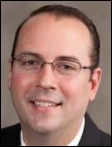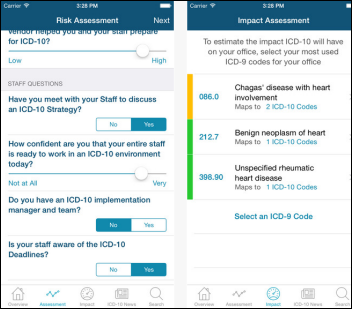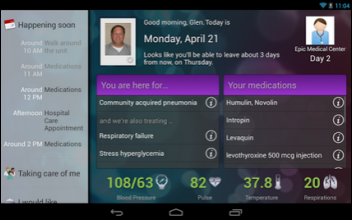Giving a patient medications in the ER, having them pop positive on a test, and then withholding further medications because…
Monday Morning Update 3/2/15
Top News

Oregon and Oracle keep suing each other over the state’s health insurance exchange and its Medicaid system, but now Oracle takes things to another legal level as it files personal lawsuits against five staff and campaign organizers of former Governor John Kitzhaber, who Oracle warns may also find himself sued shortly. Oracle says the five were politically motivated in trying to shut down Cover Oregon and then blamed Oracle as a smokescreen.
Reader Comments

From Lab Retriever: “Re: microbiology interfaces. I’m looking for something that will interface with our three blood culture instruments – Bactec, VersaTrek, and BacT/Alert – to get the data into our LIS.” My first thought was Data Innovations, just acquired by Roper Industries and paired up with Sunquest, but I’ll invite more knowledgeable readers to offer their suggestions.

From Maple HIZZ: “Re: University Health Network, Toronto. Not proceeding with their HIS replacement project in which Epic was the preferred vendor due to the $600 million cost, including interest. Annual operating expenses are projected to be an additional $50 million per year even when legacy IT systems are sunset. Glad to hear that UHN decided not to write the cheque and spend taxpayer dollars wisely.” Unverified.
From Interoperability Blues: “Re: SMART project. Every vendor talks a big game about interoperability, but the public availability of C-CDA samples for each vendor is non-existent. The SMART project gathered several, but you will notice one major vendor is missing and most vendors provided only one or two. If there were thousands of C-CDAs available, the gaps would be more clear. Heck, it would even be helpful if all vendors just posted what they used to get through certification.”
HIStalk Announcements and Requests

Two-thirds of poll respondents say Epic’s App Exchange is a PR move to support its DoD bid. New poll to your right or here: is a health system CIO’s article or presentation always more believable than that of a vendor VP? Surely your vote deserves clarifying comments (which you are welcome to add).
Attention HIStalk sponsors: we’ve made contacts about attending the sponsor networking reception event Sunday evening of HIMSS week in Chicago, but have received few RSVPs. Contact Lorre if you want to meet your industry peers and enjoy great food and drinks. Otherwise, I may just start inviting random readers since I’m stuck paying the facility’s minimum anyway.

Our five patient advocate scholarship winners (along with Regina Holliday) have run into a HIMSS snag. They had anticipated that Chicago hotels would be expensive and planned to share a room to minimize cost, but they are now finding that availability is nearly non-existent. Let me know if you have ideas of a place that would be available for at least Sunday and Monday nights – I’m thinking perhaps someone’s occasionally rented apartment. They are even exploring couch-surfing options, so they could use some help. We’re checking VRBO and Airbnb.
I swear I’m going to throw up the next time some inspiration-impaired “thought leader” tries to draw parallels between anything healthcare-related and Uber. Or for that matter, who can’t come up with anything more original than drawing strained healthcare inferences from the death of Leonard Nimoy or something else they saw on TV. As Mark Twain said, “It is better to keep your mouth closed and let people think you are a fool than to open it and remove all doubt.”

I say a lot of good things about Walgreens, but here’s a first-person “fail” experience. I had to switch pharmacies because of an insurance change and was initially thrilled at the apparent ease of transferring prescriptions to their store using its cool-looking app. Upon my first attempt at getting the prescription filled, it wasn’t on file there when I called for some reason, so I made another request via the app – it looked successful and the app told me to pick up the prescription any time after 2:00. I showed up at around 2:45 and the pharmacist on duty got snotty, saying he had been too busy to call the other pharmacy, that “the computer doesn’t work back here” in flatly declaring that the stated 2:00 time wasn’t his problem and he’d get around to it whenever he could because he was backed up with both in-store and telephone to-do items. He then suggested going back to the competitor’s pharmacy and paying cash since it would be faster. The pharmacist promised to call me when the prescription was ready – it’s now 24 hours later and nobody has called, but I drove to the store and it was ready. Lesson one: it takes only one unpleasant personal experience to wipe out a lot of corporate-level goodwill. Lesson two: the technology isn’t impressive when the people aren’t (I bet the store cuts staffing to the bone since he seemed to alone behind the counter). Lesson three: shop around (as I did) before buying electronic items at Walgreens since the Sony earbuds I was about to pick up for $20 were only $12.99 on Amazon and even better ones were just $5.99.
Last Week’s Most Interesting News
- CMS reports that it correctly processed 81 percent of ICD-10 claims in its most recent testing round and says it is ready for the switch.
- Merge Healthcare acquires DR Systems.
- New York’s mandatory electronic prescribing date of March 27, 2015 will likely be delayed for a year, with only the governor’s signature remaining to make it official.
- The FBI says it is close to identifying those responsible for Anthem’s breach.
- Cerner offers voluntary separation to its older employees.
- CTG says its services business is suffering as the EMR market cools.
- A study finds that Googling medical terms sends personal information to third party websites 91 percent of the time.
- A delayed $670 million EHR implementation in British Columbia involving IBM, Deloitte, and Cerner is rumored to be headed toward arbitration.
Webinars
March 4 (Wednesday) 1:00 ET. “5 Steps to Improving Patient Safety & Clinical Communications with Collaborative-Based Care.” Sponsored by Imprivata. Presenters: Robert Gumbardo, MD, chief of staff, Saint Mary’s Health System; Tom Calo, technical solutions engineer, Saint Mary’s Health System; Christopher McKay, chief nursing officer, Imprivata. For healthcare IT and clinical leadership, the ability to satisfy the clinical need for better, faster communication must be balanced with safeguarding protected health information to meet compliance and security requirements.
March 5 (Thursday) 2:00 ET. “Care Team Coordination: How People, Process, and Technology Impact Patient Transitions.” Sponsored by Zynx Health. Presenters: Grant Campbell, MSN, RN, senior director of nursing strategy and informatics, Zynx Health; Siva Subramanian, PhD, senior VP of mobile products, Zynx Health. This webinar will explore the ways in which people, process, and technology influence patient care and how organizations can optimize these areas to enhance communication, increase operational efficiency, and improve care coordination across the continuum.
March 12 (Thursday) 1:00 ET. “Turn Your Contact Center Into A Patient-Centered Access Center.” Sponsored by West Healthcare Practice. Presenter: Brian Cooper, SVP, West Interactive. A patient-centered access center can extend population health management efforts and scale up care coordination programs with the right approach, technology, and performance metrics. Implementing a patient-centered access center is a journey and this program will provide the roadmap.
Acquisitions, Funding, Business, and Stock

From the Allscripts earnings call:
- CEO Paul Black says Q4 sales were down due to lower patient portal sales driven by Meaningful Use Stage 2 timing.
- Black says the company is disappointed both with its year-long revenue as well as the unrealistic Wall Street expectations the company allowed to be created.
- The company will collaborate with MaineHealth on population health management projects.
- Allscripts says that Meaningful Use Stage 2-required upgrades have caused client fatigue, with many of those clients deferring other upgrades.
- When asked about the “barbell” effect in which Allscripts ambulatory clients either love or hate their products, Black says the company is offering them everything they need to manage populations and accept risk and that attrition won’t have a huge impact.
- Black says the company loses clients to acquisition-related system replacements or a missed deliverables, but the list of reasons it loses a customer is a lot shorter now than than when he was hired two years ago.
- Black said of the performance of the company’s professional services work, “Nobody’s pleased with it and we do still have some work to do. We’ve changed some of the talent that’s managing that organization.”
- The company quoted KLAS numbers indicating that 453 provider organizations will buy acute care systems in 2015 and that Sunrise is “overlooked” despite being more competitive than when he was hired.

From the Merge Healthcare earnings call:
- CEO Justin Dearborn says the acquisition of DR Systems gives Merge the #1 KLAS-ranked solutions in cardiovascular information systems, hemodynamics monitoring, and radiology information systems and consolidating providers want to deal with fewer vendors.
- The company believe that attention will swing back from Meaningful Use and ICD-10, releasing pent-up demand for other solutions.
- Merge put the DR Systems deal together so quickly that its debt holder didn’t have time to perform due diligence and DR Systems was reluctant to share information with competitor Merge, so if the due diligence doesn’t pan out, the company will have to find alternative financing to close the deal, “which could be challenging.”
- The company expects to see opportunities given that providers who are going at risk know that a significant portion of unnecessary and redundant healthcare spending is related to imaging.
People

Vanderbilt University Medical Center promotes Titus Daniels, MD, MPH to executive director of Vanderbilt Medical Group and COO for adult clinical operations at the hospital. His new responsibilities include clinical documentation and coding and EMR design, adoption, and support.

Rex Adams (Children’s Healthcare of Atlanta) joins PaySpan as CEO.

Leidos Health hires Douglas Herr (Logic Healthcare) as VP of its Epic practice.
Announcements and Implementations

ADP AdvancedMD offers the free “ICD-10 Toolkit” app.
American Family Children’s Hospital (WI) is piloting Epic’s MyChart Bedside. The tablet-powered app providers patient-caregiver communication, a scheduling display, and the display of EHR information.
Privacy and Security
Security experts at ThreatConnect say evidence from the Anthem breach suggests that a Chinese espionage group is responsible. “They made an effort to hide, but they messed up,” says one of the experts, who also implicated a Chinese university professor who works with a China-based government contractor.
Technology

HP is rumored to be close to acquiring Aruba Networks, with speculation of a Monday announcement.
Other

Central Peninsula Hospital (AK) will replace its “clunky” Meditech system with a new system from Meditech, Cerner, or Epic. They’re planning to spend $5 million to $15 million.
Texas-based for-profit hospital operator University General Health System files Chapter 11 bankruptcy, blaming poorly chosen acquisitions and unfavorable managed care contracts. The hospital’s website shows plush facilities and boasts that it provides “exceptional personalized care in a luxurious, five-star environment” and declaring that its sole hospital of 69 beds offers “private rooms, where meals are served on fine china, comfortable, flat screen televisions, oil paintings, wood accented and marble flooring all compliment the hospital room, while a baby grand piano and soothing waterfall with valet parking greet each patient and guest.” Shares are trading at $0.004, having dropped 76 percent after the announcement. The corporation is run by pain management anesthesiologist Hassan Chahadeh, MD.
Banner Health was set to take over Tucson’s University of Arizona Health Network this weekend, prepending “Banner” to UA’s existing hospital names and most likely thinking about replacing UA’s Epic system with Banner’s Cerner one. The money-losing UA spent $115 million on Epic through June 2014, of which $32 million was unbudgeted due to a go-live delay. At the time, UA said installing Epic was “the biggest operational change this organization has every undertaken,” possibly failing to foresee that just a few months later, UA’s red ink would force it to sell out to Phoenix-based Banner. Every hospital operator should want to buy an academic medical center – easily identified waste and bureaucratic incompetence fertilize a lot of low-hanging financial fruit.

A letter to the editor by a patient of Rideout Health (CA) accuses the hospital’s CEO of lying when he claimed that its recent computer downtime caused no patient harm. The man says his wife had a cardiac test whose results indicated a possible heart attack and the need for intervention, but she didn’t receive them until two weeks afterward because of the computer problems, the hospital person told her.
The local North Carolina TV station profiles the use by Vidant Health and ECU Physicians of Epic’s Canto and Haiku mobile apps to share information.
A Florida nephrologist is accused of inappropriately touching an elderly patient, who explained that he had no reason to touch her since all he does during her visits is to read her kidney function levels to her from his computer.
The State of Washington indefinitely suspends the medical license of an anesthesiologist who repeatedly sent sexually explicit text messages during surgeries, used medical images for sexual gratification, texted a nude selfie to a patient, and had sex on the job.

A posthumous Los Angeles Times editorial by reporter Laurie Becklund, who died last month of metastatic breast cancer, says to forget Susan G. Komen-type “cures” and expensive pink ribbon awareness campaigns and instead treat every patient as a one-person clinical trial and store their information in a cancer database to which both doctors and patients can contribute.
Surely this is either a hoax or massively wishful thinking: a surgeon in Italy says he’s just two years away from being able to plant a person’s head on a donor body. Somehow I don’t think insurance companies are going to pay for that.
Sponsor Updates
- Zynx Health VP of Clinical Informatics Victor Lee, MD writes about “Medicare Reimbursements for Value.”
- ESD celebrates its 25th anniversary.
- ZirMed will exhibit at the Pay for Performance Summit March 2-4 in San Francisco.
- The Sandlot Solutions-powered MetroChicago HIE reaches 1 million patient records.
- Tamara St. Claire, chief innovation officer for commercial healthcare at Xerox, offers a recap of the company’s recent presentation on patient engagement.
- Frisbie Memorial Hospital Healthcare Project Director Sally Gallot-Reeves, RN writes about “Achieving an 82% ROI with smartphones” in the latest Voalte blog.
- VitalWare President and CEO Kerry Martin will speak at the HCP Hospital and Healthcare IT Conference March 3 in Orlando.
- Verisk Health creates the Idea Hub, a virtual library that collects the company’s research, solution information, and social buzz.
- ZeOmega Chief Strategy Officer Nandini Rangaswamy defines population health management in the first of a blog series.
- Sunquest Information Systems and Summit Healthcare will exhibit at HIMSS UK March 3-4 in London.
- Huron Consulting Group recaps the activities of its Huron Helping Hands program in 2014.
- T-System summarizes its experience at the HFMA Dixie 2015 Institute in its latest “Informer” blog.
- Sagacious Consultants offers “5 Things a Billing Office can Learn from Toyota.”
- PMD’s Elise Lewyckyj offers answers to PQRS questions in the company’s latest “Charge Capture” blog.
- Qpid Health will participate in the inaugural Innovation Lab at the HIMSS SoCal Annual Healthcare IT Conference March 2 in Los Angeles.
- Orion Health’s David Boerner breaks down FHIR fundamentals in a new company blog.
- Medicomp System posts a HIMSS15 preview video featuring its Quipstar game show (watch for the Dr. Gregg cameo).
- NTT Data’s Srikanth Devarajan writes about “The Guaranteed Uncertainties, Wearable Futures.”
- Nordic offers the first episode in its “Making the Cut” video series on Epic conversion planning.
- The New York eHealth Collaborative will host “DSRIP: Moving from Application to Implementation” March 4 in New York City.
- Patientco’s Patrick Creagh writes about “Having All of Your Medical Bills in One Place.”
- Oneview Healthcare posts “What it Takes to Meet Consumer Expectations in Healthcare.”
Contacts
Mr. H, Lorre, Jennifer, Dr. Jayne, Dr. Gregg, Lt. Dan.
More news: HIStalk Practice, HIStalk Connect.
Get HIStalk updates.
Contact us online.







I definitely recommend AirBnB. I’ve done it at least a dozen times and have loved the experience including during HIMSS. I like it better than a hotel in so many ways. Plus, I’ve saved thousands of dollars. I’m dong the same in Chicago and it looks like there are still a number of options. The only place it hasn’t been great was Orlando, but that’s because there are no houses near the convention center. Chicago is hard hotel or AirBnB since the evening events are so separate from the convention center.
My advice on AirBnB. Filter for ones that are the “entire place.” Be sure to check out the cleaning fees since those can really add up if you’re not careful. Read the reviews since they’ll really give you a good idea of what you’re getting into. Be clear on arrival times since that can be a challenge if it’s not well communicated or they don’t have a keyless entry code.
Since I’m obviously active, here’s my link which will give you $25 if you sign up and book: http://bit.ly/1E80msK (I’ll get $25 too). Either way, I’m a big time AirBnB fan.
One last story. I stayed across the street from CHIME in Scottsdale and paid 1/3 what the executives paid and had 2 full king beds, leather sofas, full kitchen, etc. Of course, one executive I talked to could only talk about the cockroach in his 3 times the price room 😉
“CMS reports that it correctly processed 81 percent of ICD-10 claims in its most recent testing round and says it is ready for the switch.”
In the classes that I teach, students who receive a grade of 81% on their tests are deemed, NOT READY to move ahead!
It seems that CMS should be able to process well over 95% of ICD-10 claims before they say they are ready for go-live.
The longtime middleware for micro interfaces has been Observa. But now there is talk of Myla which seems to be taking Observa’s place. Not sure if they are vendor agnostic, or if they only work on BioMérieux products. The nice thing about micro-specific middleware is their reporting ability and total understanding of microbiology needs. They follow CLSI guidelines and update software/reports as needed. There is a move as well to go with micro automation. Not sure what that looks like, yet, but it is worth watching out for.
Re: Interoperability Blues, Re: SMART project: It’s too bad HL-7 snubbed adopting PDF Healthcare and ONC didn’t take a look.
PDF Healthcare is a “Best Practices Guide” (BPG) that is supplemented by an “Implementation Guide” (IG). The PDF Healthcare BPG and the IG are based on open, published specifications with direction specific to the health care industry. The BPG and IG describe generally unknown attributes of the Portable Document Format (PDF, a global, open standard since July 1, 2008; ISO 32000-1:2008), freely viewable on almost every phone/laptop/desktop around the world (the Adobe Reader ™) – to facilitate the capture, exchange, preservation and protection of healthcare information. The health care information can include but is not limited to personal, handwritten documents, structured or unstructured clinical notes, electronic forms, scanned document images, digital diagnostic images, photographs, and signal tracings (e.g., electrocardiograms [ECGs]).
The PDF Healthcare BPG and IG embrace HL7’s Clinical Document Architecture (C-CDA). This implementation is possible because PDF Healthcare contains any well-formed eXtensible markup language (XML). This allows any
standardized data set to be embedded in a PDF and then linked to the actual display of that data, retaining
the XML. In addition, PDF Healthcare stores and exchanges health information prior to or in lieu of deploying, for example, EHR exchange platform applications.
PDF Healthcare is NOT another proposed standard. The PDF Healthcare BPG and IG are intended to be used to guide the generation and consumption of secure and portable containers of personal health information and EHR information rather than replacing existing standards or adding new standards for health care information interoperability.
If you read the details about CMS’ ICD-10 testing (http://www.cms.gov/Medicare/Coding/ICD10/Downloads/2015-Jan-End-to-End-Testing.pdf), only 3% of the failed tests were due to errors in ICD-10 coding; 3% were due to errors in ICD-9 coding; 13% were non-ICD-related errors (invalid NPI, invalid dates or place of service, etc.). By AHNC’s grading standards above, ICD-10 is 97% okay and ready for prime time. Submitters still have to get the basics right or they will be kicked back.
In response to the posting about the results of CMS’ recent end-to-end testing, I would like to clarify that only 3% of the rejected claims were related to ICD-10 errors – 13% of the rejected claims had nothing to do with ICD-10. So when you omit reasons for rejected claims that are unrelated to ICD-10, the percentage of ICD-10 claims that were able to be accepted and correctly processed actually stands at 97%.